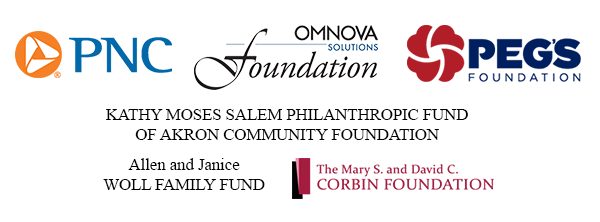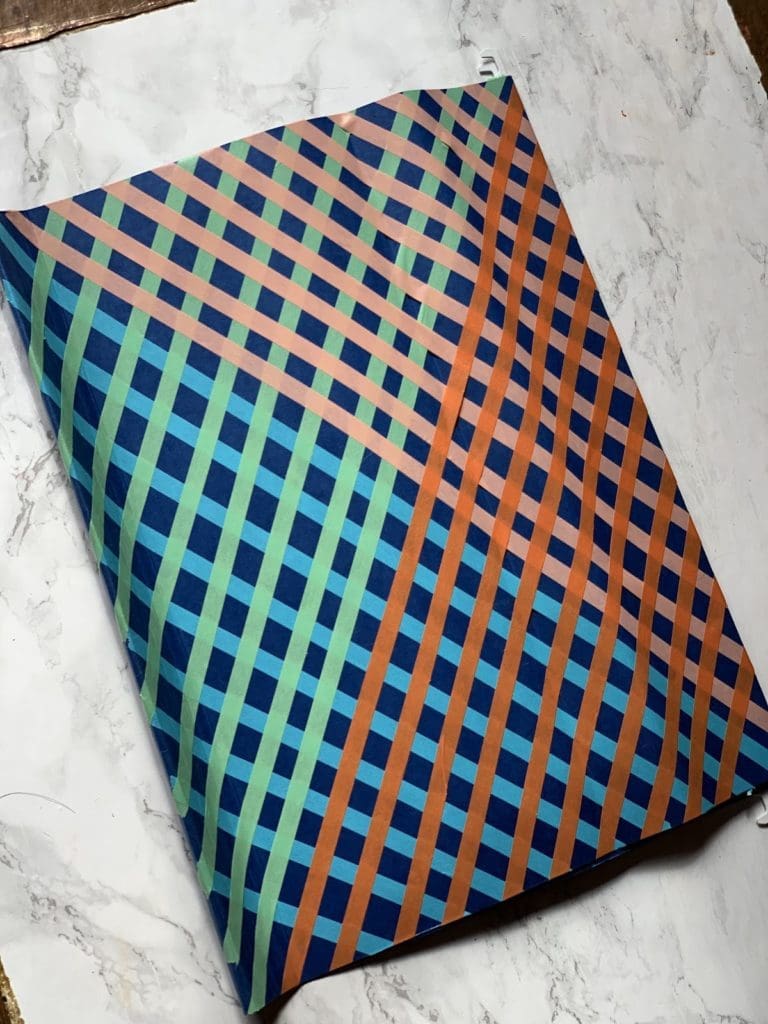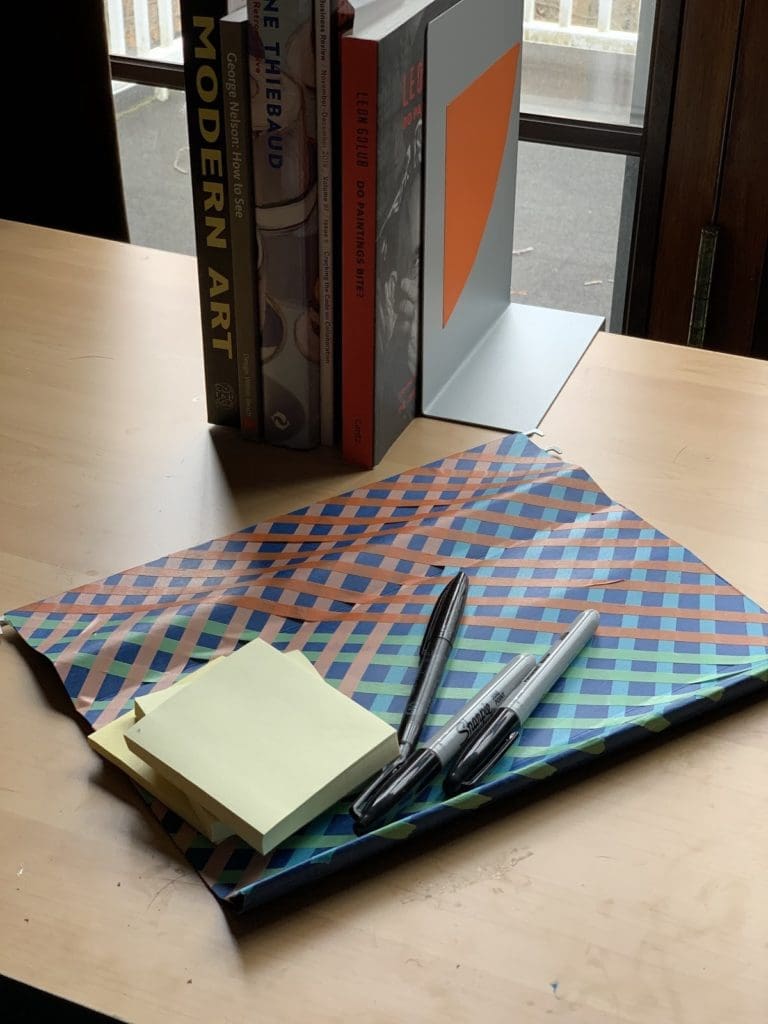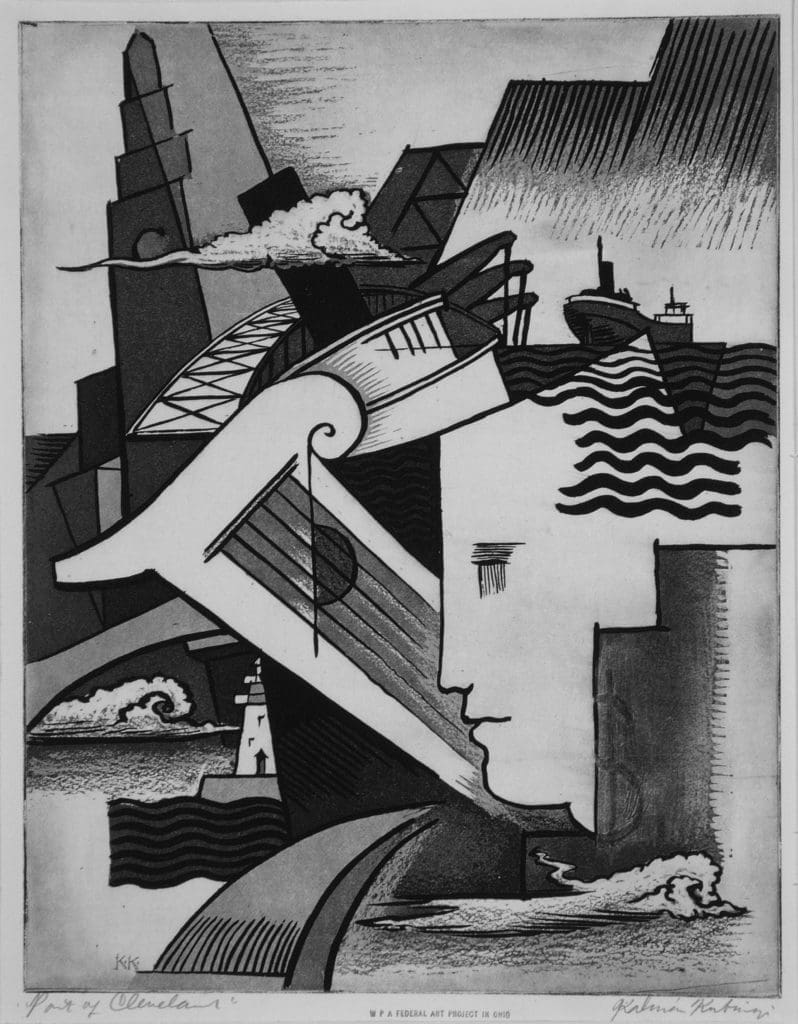Media
Op Art Folders
#MuseumFromHome #TryThis
The Op Art movement is often associated with Julian Stanczak, whose first major show at the Martha Jackson Gallery in New York was called Julian Stanczak: Optical Paintings. His poetic works use repetition of line in constrained color palettes. Stanczak’s virtuoso linear paintings are a testament to craftsmanship. Attempting to lay down a grid with Washi tape, one gains an appreciation for the quality of the real works of art.
SUPPLY LIST:
Scissors
Solid color folder
Washi tape
- Find a folder with a singular color.
2. Explore the museum’s large holdings of Stanczak for inspiration. Once you’ve decided on a composition, pick thin washi tape for the best effect. Lay down the tape slowly so that you can keep the lines straight. Imagine painting so many lines!
3. Feel free to play with color and patterns. The final product is visually appealing AND useful.
#TryThis is made possible with support from PNC, the Mary S. and David C. Corbin Foundation, the Alan and Janice Woll Family Fund, OMNOVA Solutions Foundation, Peg’s Foundation, Robert O. and Annamae Orr Family Foundation, Kathy Moses Salem Philanthropic Fund of the Akron Community Foundation, Charles E. and Mabel M. Richie Foundation and Mr. and Mrs. William H. Considine

Ellsworth Kelly Desk Organizers
This is not only a chance to spruce things up in the home office, but also get organized. Many of us have impulse buys sitting around; good ideas never put to use. Those banal pieces of office equipment are easily improved.
For this project, we’re taking American painter and printmaker Ellsworth Kelly as our inspiration. Kelly’s abstract works often feature pared-down forms and colors. Akron Art Museum’s lithograph, for example, includes only green and black. Kelly’s paintings featured uniform expanses of color on shaped canvases.
SUPPLY LIST:
Scissors
Glue
Colored Paper
Base Object(s)
This project is just as easy to adorn any surface in the office that needs color and style.
- Find your base, like these bookstops.
2. Look for colored paper. This paper has a sticky back, but you can use a glue stick to affix the paper to your surface. Go online to the Akron Art Museum’s collection, as well as other notable collections, to explore the work of Ellsworth Kelly. The Art Institute of Chicago and the Metropolitan Museum of Art have some nice examples. Once you have a good handle on the ways Kelly plays with shape, cut your own.
3. Affix your shapes to the base. Kelly was notable for the smooth polished surface of his paintings, so try to keep your paper smooth.
#TryThis is made possible with support from PNC, the Mary S. and David C. Corbin Foundation, the Alan and Janice Woll Family Fund, OMNOVA Solutions Foundation, Peg’s Foundation, Robert O. and Annamae Orr Family Foundation, Kathy Moses Salem Philanthropic Fund of the Akron Community Foundation, Charles E. and Mabel M. Richie Foundation and Mr. and Mrs. William H. Considine

#TryThis Projects for Home
The Akron Art Museum is hoping to find ways to meet the new needs of our patrons. With so much free time, many people are looking for new ways to be engaged and active. We’ll be posting regular features to keep you living creatively.
Many of us are facing weeks of working from home, a new endeavor for the masses. Spartan spaces can be pretty depressing, particularly for those used to being surrounded by colleagues and outside stimulation.
We’re here to help you dress up that blah desk into a colorful, creative space with a little inspiration from the collection in a series of posts from our new #MuseumatHome #TryThis series. Over the next few days, we’ll take your office from boring to exhilarating.
First up, let’s help you keep that desk free of coffee rings. Coasters are an easy, useful project for any part of the home. In this dreary time, color can transform your attitude. Color was integral to Josef Albers’ work.
Albers was a 20th century educator and artist who was incredibly influential on modern art. He taught notable artists from the AAM collection like Robert Rauchenberg, Richard Anuszkiewicz and Julian Stanczak. In his Homage to the Square series, Albers systematically investigates the ways that the appearance of a color is influenced by adjacent hues. Alber’s rigorous exercise in color theory is the jumping off point for these coasters.
SUPPLY LIST:
- Scissors
- Glue
- Cardboard box
- Fabric/Felt/Colored Paper
PROCEDURES:
- Find an old cardboard box.
2. Cut it down into 3–4 inch squares.
3. Find colored paper or fabric. Felt works great. Use the cardboard as a guide, and cut the color to size.
4. Cut squares of fabric or cloth from a similar color family to the base color.
5. Glue each of your squares down, small to large, and then onto the cardboard base.
Our collection is a wonderful place to explore the influence of Albers on modern art. For more about Albers, the Josef and Anni Albers Foundation is worth a look. Check out the works by Robert Rauchenberg, Richard Anuszkiewicz, Julian Stanczak, Yellow Filtration is seen below (credit line), all students of Josef Albers in our collection.
#TryThis is made possible with support from PNC, the Mary S. and David C. Corbin Foundation, the Alan and Janice Woll Family Fund, OMNOVA Solutions Foundation, Peg’s Foundation, Robert O. and Annamae Orr Family Foundation, Kathy Moses Salem Philanthropic Fund of the Akron Community Foundation, Charles E. and Mabel M. Richie Foundation and Mr. and Mrs. William H. Considine.

Venerable Art Oracle Offers Inspiration
Our beloved Venerable Art Oracle knows that it’s hard sometimes, in the dead of winter, to find inspiration. But, there is no better place to turn than our own Northeast Ohio artists. The amount of talent close by is astonishing. Get your inspiration now.
The Venerable Art Oracle Suggests Inspiration
Click the button for your inspiration




